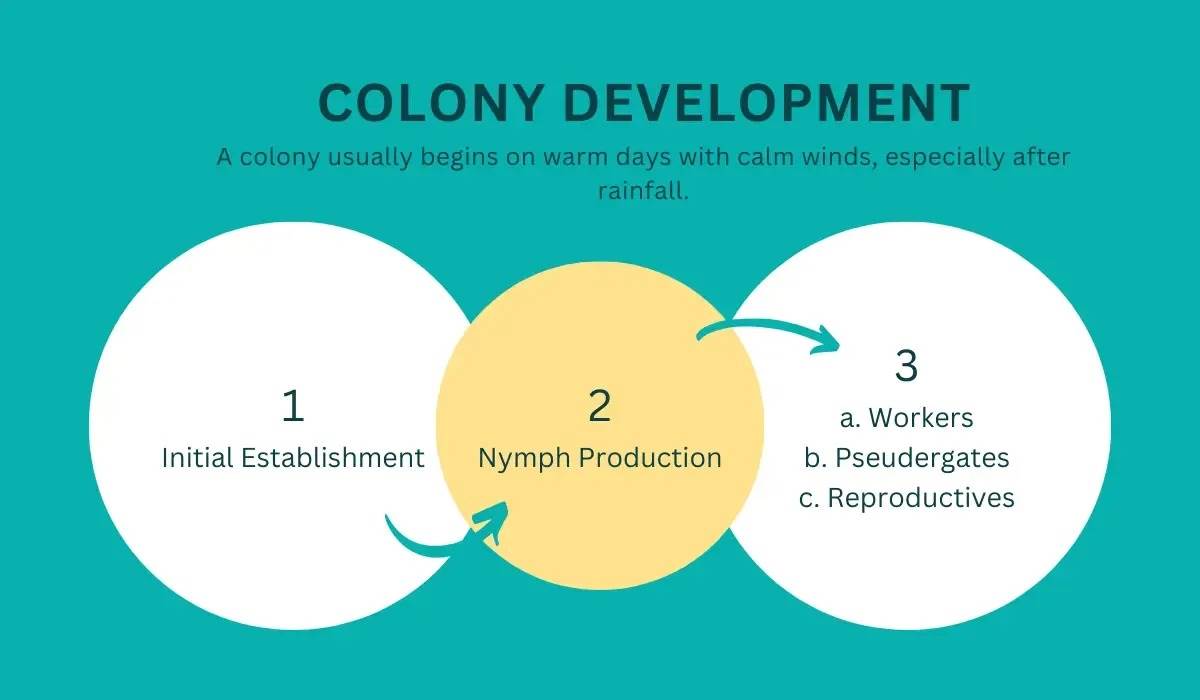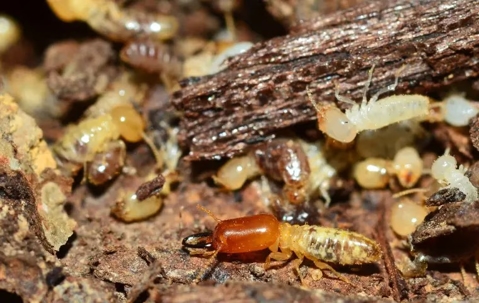Identifying Drywood Termites in South Florida
Drywood termites are a real headache for Florida homeowners. They silently nibble away at the very structure of your homes without needing soil contact.
Spotting the signs can be a detective game. Catching them early is crucial for nipping infestations in the bud and minimizing the damage.
If these termites invite themselves, tackling them might involve anything from spot treatments to calling in the pros for full-on fumigation. When it comes to protecting your Florida home from drywood termites, it's all about staying vigilant and ready to act on termite control.
Key Takeaways
- Drywood termites thrive within the very wood of your homes, leading to significant property damage without needing soil contact.
- Early detection of these pests hinges on identifying key indicators, like their unique fecal pellets and the appearance of winged swarmers during mating season.
- Combating drywood termite damage requires a mix of diligent prevention strategies and the expertise of pest control professionals to keep your home safe and intact.
How to Identify Drywood Termites?
In Florida, drywood termites are one of the tricky types of termites, along with dampwood termites and subterranean termites.
Knowing what to look for regarding their distinctive physical characteristics can save homeowners like you a lot of trouble.
Physical Characteristics
Drywood termites are termite species usually about 3/8 to 1 inch in length. Their bodies range from light to dark brown, making them a bit elusive within their wooden havens.
Termite Caste | Description | Role | Indication |
About 1 inch long, two sets of equal wings. | Indicate new drywood termite colonies forming. | Their presence means there's an existing termite problem. | |
Soldiers | Large mandibles, no wings, darker head. | Protect the colony from threats. | Their presence signals a well-established colony. |
Life Cycle and Behavior of Drywood Termites
Unlike the West Indian drywood termite, drywood termites in Florida exhibit distinct patterns in their life cycle and eating habits.
Colony Development

A colony usually begins on warm days with calm winds, especially after rainfall.
Here's how the process unfolds:
- Initial Establishment: A king and queen termite settle in a wooden structure to start a new colony.
- Nymph Production: They produce nymphs (immature termites) that have the potential to become:
- Workers: Maintain the colony and care for the brood (young termites).
- Pseudergates: Serve flexible roles until they specialize based on the colony's needs.
- Reproductives: Mature to start new colonies potentially.
After about 4 to 8 years, a mature colony with a few thousand termites might engage in swarming, where winged termites leave to start new colonies.
Drywood Termite Diet
Drywood termites primarily feed on cellulose, a plant fiber found in wood. This food source provides them with their nutritional needs and nesting material.
Termite workers digest cellulose and share nutrients with the colony through trophallaxis.
They often quietly cause damage to the following wood sources as they consume the wooden elements from the inside out:
- attic spaces
- wooden frameworks
- furniture
What Are the Signs of Drywood Termite Infestations?
Drywood termites can cause extensive damage over time without apparent signs on the surface. A regular termite inspection is crucial, especially in areas prone to termite infestations like South Florida.
Early Signs
Aside from termite droppings, sawdust, and mud tubes, here are other early telltale signs of an infestation.
- Frass: You may notice tiny, six-sided feces pellets below infested wood, indicating the presence of drywood termites.
- Kick-Out Holes: Small openings on infested wood where termites have expelled their frass.
Intermediate Signs
As the infestation progresses beyond the initial signs, the termites begin to make themselves more at home within the wooden structures of your property.
- Galleries within Wood: Termites create tunnels within the wood, a destructive termite activity often hidden from view.
- Slight Structural Changes: Subtle signs of damage might become noticeable upon closer inspection, hinting at the termites' deeper invasion.
Advanced Signs
When the infestation reaches a critical stage, the evidence becomes impossible to ignore, with clear and often alarming signs of structural compromise.
- Hollow Sounds: Wood infested to this degree may sound hollow when tapped, signaling extensive internal damage.
- Wood Gives Way: Infested areas may collapse under minimal pressure at this stage, indicating severe damage.
What Is the Impact of Drywood Termite Damage?
Drywood termites in Florida are notorious for causing significant damage to wooden furniture and structures.
Effects on Structures
Understanding the impact can save your Florida home considerable repair costs and structural headaches.
- Structural Compromise: The wood that supports the home is weakened as termites consume it from the inside out.
- Insidious Nature: The decayed wood is often only apparent once severe damage has occurred, making early detection challenging.
Financial Implications
Drywood termite damage can have numerous financial implications.
- The cost of exterminating drywood termites can vary but is often expensive due to the difficulty of detecting these pests.
- Repairing or replacing damaged wood can be a significant expense.
- Properties with a history of termite infestations may decrease market value or become challenging to sell.
What Are Effective Pest Management Measures for Drywood Termites?
To safeguard your home in Florida from the costly and irreversible damages caused by drywood termite infestations, you must prioritize preventative measures and conduct regular inspections.
You can take several proactive steps to defend your property against drywood termite invasion. Four key tactics include:
1. Conduct Regular Inspection
An annual thorough inspection is your first line of defense against drywood termites. You can catch infestations early by having a professional exterminator examine your home each year, especially around common entry points like:
- Windowsills
- Door frames
- Foundation cracks
2. Seal Entry Points
Drywood termites only need a tiny crack to invade your home, making it crucial to seal any potential entry points.
Use a high-quality sealant or caulk to fill in cracks and crevices around your home's exterior, particularly where utility lines enter.
3. Ensure Proper Ventilation
Moisture attracts termites, making it essential to maintain well-ventilated attics and crawl spaces. Use vents, dehumidifiers, and fans to keep these areas dry.
Reducing humidity and moisture in your home makes it less inviting to termites and helps preserve the integrity of wood and other materials.
What Are Available Treatment Methods for Drywood Termite Infestations?
When they have already established a foothold, various drywood termite treatment methods are available aside from termiticides:
Spot Treatments
Spot treatments focus on specific areas where termites have made themselves at home. This targeted method is perfect for nipping minor infestations in the bud.
You can find a quick comparison of the two spot treatment options below.
Treatment Type | Advantages | Best For |
Chemical | Powerful and fast-acting | Homes needing immediate relief from termites |
Non-chemical | Eco-friendly and less toxic to humans and pets | Those preferring a natural, though potentially ineffective, approach |
Fumigation
Tent fumigation involves the entire house being covered with a tent and filled with termite-killing gasses.
How it works
- Tent Setup: The entire house is tented to contain the fumigant.
- Gas Introduction: Termite-killing gasses are then introduced to permeate every area of the home.
- Duration: You must vacate the premises for a few days during the treatment.
Benefits
- Ensures complete eradication of termites from the home.
- Effective for severe and widespread infestations.
When to Contact a Professional Pest Control Company?
Dealing with pests can be daunting, especially when the situation escalates beyond a simple fix on termite prevention.
Here’s how you know it’s time to call in a professional pest control company for a free inspection:
- Detection of an Infestation: You've spotted signs of pests, such as damage to property, droppings, or the pests themselves, but you need the tools or knowledge to tackle the problem independently.
- Recurring Pest Issues: Despite your best efforts, pests keep returning, indicating a larger or more complex problem than initially thought.
Termite Troubles: Termites are a particular concern, requiring specialized treatment strategies that DIY options can't provide.
